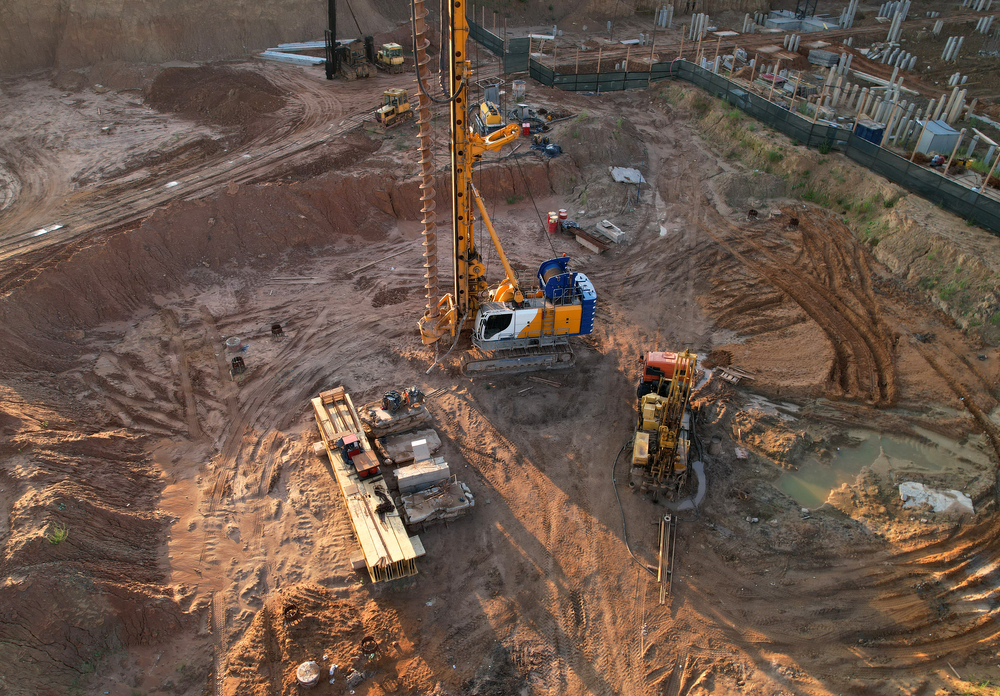How Geotheta can Save You Time, Stress, and Money.
How Geotheta can Save You Time, Stress, and Money.
Blog Article
Geotheta Things To Know Before You Buy
Table of ContentsHow Geotheta can Save You Time, Stress, and Money.Facts About Geotheta RevealedGeotheta Things To Know Before You Buy5 Simple Techniques For GeothetaGeotheta Things To Know Before You Get This

They carry out site investigations, accumulate examples, perform research laboratory tests, and examine data to examine the viability of the ground for construction jobs - Tailings Engineer. Based upon their findings, geotechnical designers provide referrals for structure layout, slope stability, retaining frameworks, and reduction of geotechnical hazards. They team up with various other experts, such as architects, structural engineers, and construction teams, to guarantee that geotechnical factors to consider are incorporated right into the general job design and application
By examining the actions and homes of dirt and rock, they can determine prospective geotechnical threats such as landslides, dirt negotiation, or incline instability. Their competence helps protect against failings or accidents that can jeopardize lives and home. Here are some comprehensive duties and obligations of a geotechnical designer: Site Examination: Geotechnical designers conduct site investigations to collect information on subsurface problems.
They analyze the data to understand the residential or commercial properties and habits of the soil and rock, including their strength, leaks in the structure, compaction characteristics, and groundwater conditions. Geotechnical Analysis and Design: Geotechnical engineers analyze the information collected throughout site examinations to examine the security and suitability of the site for building and construction tasks. They execute geotechnical estimations and modeling to assess variables such as birthing capacity, settlement, slope security, lateral earth pressures, and groundwater circulation.
The Best Guide To Geotheta
Structure Style: Geotechnical engineers play a crucial role in developing structures that can safely support the designated framework. They evaluate the soil problems and load demands to determine the proper foundation kind, such as shallow foundations (e.g., footings), deep structures (e.g (https://ameblo.jp/geotheta/entry-12862281966.html)., heaps), or specialized methods like dirt renovation. They take into consideration variables such as negotiation limits, birthing capacity, and soil-structure interaction to create optimal foundation designs
They examine building and construction strategies, display website tasks, and perform field assessments to validate that the design referrals are adhered to. If unanticipated geotechnical issues develop, they analyze the scenario and supply recommendations for remediation or changes to the style. Danger Evaluation and Mitigation: Geotechnical designers evaluate geotechnical threats and threats connected with the project site, such as landslides, liquefaction, or dirt disintegration.

Collaboration and Interaction: Geotechnical engineers function carefully with various other specialists associated with a project, such as architects, architectural engineers, and building and construction groups. Efficient communication and collaboration are vital to incorporate geotechnical factors to consider into the total project layout and construction process. Geotechnical engineers offer technical knowledge, answer queries, and ensure that geotechnical demands are satisfied.
The Best Guide To Geotheta
Below are some kinds of geotechnical designers: Structure Designer: Structure designers concentrate on creating and evaluating foundations for structures. They evaluate the soil conditions, tons requirements, and website attributes to establish one of the most proper structure type and layout, such as superficial structures, deep foundations, or specialized strategies like stack structures.
They assess the variables influencing slope security, such as dirt residential properties, groundwater problems, and slope geometry, and establish strategies to avoid incline failings and reduce dangers. Earthquake Engineer: Quake engineers specialize in examining and creating structures to endure seismic forces. They analyze the seismic threat of a website, review dirt liquefaction capacity, and develop seismic design criteria to make sure the safety and strength of frameworks during earthquakes.
They carry out field screening, gather samples, and assess the accumulated information to identify the soil properties, geologic developments, and groundwater problems at a site. Geotechnical Instrumentation Designer: Geotechnical instrumentation designers focus on tracking and gauging the habits of soil, rock, and frameworks. They mount and preserve instrumentation systems that monitor elements such as dirt negotiation, groundwater levels, incline motions, and structural variations to assess performance and give early warnings of possible problems.
Excitement About Geotheta
They carry out examinations such as triaxial tests, loan consolidation examinations, direct shear tests, and leaks in the structure examinations to gather data for geotechnical analysis and layout. Geosynthetics Engineer: Geosynthetics designers concentrate on the layout and application of geosynthetic materials, such as geotextiles, geogrids, and geomembranes. They make use of these products to enhance soil stability, enhance slopes, provide water drainage remedies, and control disintegration.
They have a tendency to be investigatory individuals, which indicates they're intellectual, introspective, and investigative. They are interested, systematic, reasonable, analytical, and logical. A few of them are also social, indicating they're kind, generous, cooperative, client, caring, handy, understanding, tactful, and pleasant. Does this seem like you? Take our complimentary occupation test to figure out if geotechnical engineer is just one of your top occupation suits.
In the office environment, geotechnical engineers utilize specialized software program tools to execute computations, develop designs, and assess information. They prepare reports, review task specifications, communicate with clients and staff member, and coordinate project activities. The office setting supplies a conducive environment for research study, analysis, and cooperation with other specialists included in the task.
Some Known Details About Geotheta
They often go to task sites to perform site investigations, analyze geotechnical problems, and gather data for analysis. These gos to involve taking a trip to different places, often in remote or difficult surfaces. Geotechnical engineers might do soil tasting, conduct examinations, and monitor building tasks to make sure that the geotechnical elements of the job are being implemented correctly.
Geotechnical designers likewise function in specialized geotechnical laboratories. Geotechnical research laboratory engineers work thoroughly in these environments, taking care of screening equipment, operating tools, and recording information.
Report this page